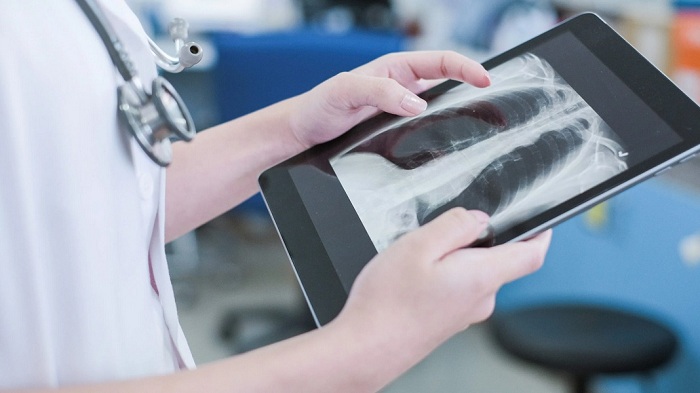Changi General Hospital (CGH), a 1000-bed academic medical institution under SingHealth located in the eastern part of Singapore, together with the Integrated Health Information System (IHiS), Singapore’s national HIT agency, have developed a Community Acquired Pneumonia and COVID-19 Artificial Intelligence (AI) Predictive Engine (CAPE) that can determine the likelihood of whether the patient has mild or severe pneumonia, based on the chest X-ray image.
WHY IT MATTERS
The ability to quickly predict the patient’s expected severity of pneumonia would enable clinicians and administrators to efficiently allocate healthcare resources and treat patients, particularly in pandemic situations, where there may be an increased need for inpatient care and critical care support.
As pneumonia severity correlates to the degree of Chest X-Ray (CXR) lung image abnormality, CGH’s Respiratory and Critical Care Medicine and Radiology teams recognized the potential in leveraging AI to predict the severity of pneumonia from CXR images, and worked with the IHiS Health Insights team to develop CAPE.
HOW IT WORKS
Using more than 3,000 CXR images and 200,000 data points including lab results and clinical history, CAPE was trained to generate a score for (a) low-risk pneumonia with anticipated short inpatient hospitalization; (b) the risk of mortality (death); and (c) the risk of requiring critical care support – indicators of pneumonia severity – from CXR images.
Initial results have been promising – validation tests at CGH showed that CAPE has an approximate accuracy of 80% in predicting the future presence or absence of severe pneumonia. This is comparable to traditional pneumonia severity tools that are scored manually.
FUTURE APPLICATIONS
CAPE is implemented as a standalone desktop application that can be installed on radiology workstations. This helps to ensure ease of integration and use, as well as a shorter deployment time, as only minor changes need to be made to the existing system to incorporate CAPE.
Work is on-going to integrate more data-sets from clinical data from the SingHealth cluster including Singapore General Hospital and Sengkang General Hospital and other public health institutions in Singapore, which would likely make CAPE even more accurate.
The team is also exploring collaborative models, including hosting it as a “freeware” collaborative tool on a research platform for interested researchers globally, so that CAPE can be generalized and eventually used internationally.
THE LARGER PICTURE
In tackling the COVID-19 pandemic situation in Singapore, IHiS has worked with its healthcare partners on over 50 healthtech projects. These include equipping Community Care Facilities (CCFs) with technologies – CCFs are temporary health facilities which were created to deal with clinically lower risk COVID-19 patients and the CAPE AI tool.
Prior to the COVID-19 pandemic, IHiS worked with Tan Tock Seng Hospital (TTSH) to develop its Command, Control and Communications (C3) system, which went live in the third quarter of 2019. During the pandemic, TTSH accelerated the module’s enhancement to incorporate the real time location system (RTLS) and video-monitor human traffic.
ON THE RECORD
“One main advantage of using AI as a predictive tool is that the risk of patients requiring critical care can be calculated almost instantaneously. Emergency Department and ward doctors can receive an early warning for possible clinical deterioration and prescribe the appropriate interim measures to improve patient outcomes,” said Dr Charlene Liew, Project Lead and Deputy Chief Medical Informatics Officer, CGH, and Director of Innovation, SingHealth Radiological Sciences Academic Clinical Program (RADSC ACP).


















